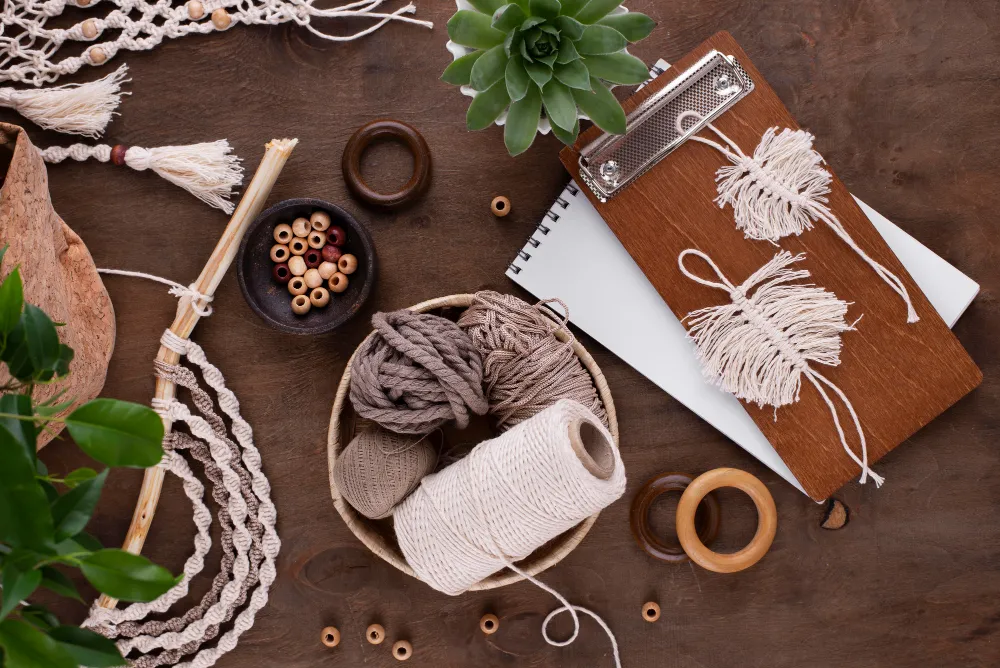
The Timeless Art of Handloom: Why It Still Matters in the Modern World
In a world where everything is rapidly mass-produced and consumed, handloom remains a beautiful reminder of what it means to create with care, patience, and purpose. Across India, and especially in Haryana, handloom weaving is not just a craft — it is a deep cultural expression. It represents centuries of tradition, passed down through generations, evolving yet staying true to its roots.
Today, even as technology transforms every part of our lives, handloom continues to thrive among those who value authenticity, sustainability, and cultural richness. Let’s explore why this timeless art still holds its place in the modern world.
A Legacy of Tradition and Skill
The art of handloom weaving is as old as Indian civilization itself. From the Indus Valley to modern-day Haryana, weaving has been part of Indian life — from everyday garments to ceremonial attire. Each thread tells a story — of community, family, heritage, and creativity.
In Haryana, traditional handloom weaving includes cotton and woolen fabrics, often featuring intricate patterns, vibrant colors, and region-specific motifs. It’s a slow, meditative process requiring skill, patience, and a deep understanding of materials.
These techniques are usually passed down through families. Many of the artisans have learned the craft from their parents or grandparents, continuing the legacy while adding their own creative flair.
Why Handloom Still Matters Today
In today’s fast-paced consumer market, you may wonder why handloom is still relevant. But the truth is — it’s more important than ever.
1. Sustainable Fashion
The fashion industry is one of the most polluting industries in the world. Handloom, by contrast, is eco-friendly. It uses far less electricity, water, and chemicals than machine-made fabrics. Most weavers work with natural fibers and dyes, creating fabrics that are biodegradable and gentle on the skin.
Choosing handloom means making a conscious, sustainable choice — one that respects both the environment and the people who make your clothes.
2. Support for Rural Artisans
When you buy handloom products, you are directly supporting skilled artisans and their families. In India, over 4.3 million people are engaged in handloom production — many of them in small villages.
This industry provides livelihood and dignity to artisans who might otherwise be forced to migrate for unskilled labor. Handloom allows them to stay rooted in their communities while contributing to the economy.
3. A Symbol of Cultural Identity
Each handloom piece is unique — reflecting the culture, beliefs, and stories of the region it comes from. Whether it's the geometric precision of Haryana’s looms or the rich embroidery that often accompanies it, these designs are a testament to regional pride.
Wearing handloom is more than a fashion statement — it’s a way of celebrating India’s cultural diversity and artistic depth.
The Emotional Value of Handmade
There’s something deeply personal about owning a piece of handloom. Unlike factory-made garments, handwoven fabrics carry the imprint of the artisan’s hand and heart. Every thread is placed intentionally, every pattern crafted with meaning.
That emotional value is something you can feel when you wear handloom — it becomes more than a garment; it becomes a story, a memory, a connection.
Modern Fashion Meets Heritage
Thanks to a growing movement toward slow fashion, handloom is making a strong comeback in urban wardrobes. Designers across the country — and even globally — are embracing traditional Indian handloom textiles to create modern, stylish, and ethical fashion.
From elegant sarees and kurtas to trendy jackets and home decor, handloom products today are not limited to traditional looks. They blend the past and present beautifully, offering timeless fashion with a modern soul.
At Haryana Handloom, we are proud to bring this blend to life — offering authentic handwoven products that suit today’s tastes while staying rooted in tradition.
Why Consumers Are Choosing Handloom
Here’s what modern buyers are saying about handloom:
-
“I feel good knowing I’m supporting local artisans.”
-
“Handloom feels more personal and meaningful than mass-market brands.”
-
“The quality is unmatched — it lasts longer and looks better over time.”
This growing awareness is encouraging more people to move toward handloom, especially as they become more mindful of how their purchases affect the world.
The Future of Handloom
While handloom faces challenges such as lack of exposure, low wages, and competition from powerlooms, there is hope. Initiatives from the government, NGOs, and small businesses like Haryana Handloom are working to revive and promote this traditional craft.
We believe that by creating awareness and making handloom more accessible, we can continue to keep this art alive — not just as a nostalgic remnant of the past, but as a vibrant part of the future.
Final Thoughts
The art of handloom is a thread that ties us to our roots. It is proof that beauty doesn’t have to come at the cost of ethics, environment, or emotion. In a world of fast fashion and fleeting trends, handloom reminds us to slow down — to value what’s made with love, skill, and story.
At Haryana Handloom, we’re committed to preserving this legacy — and bringing it into homes across India and beyond.
Because handloom isn’t just fabric. It’s heritage, it’s heart, and it’s forever.






